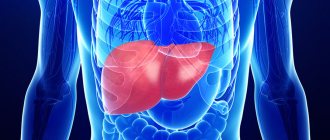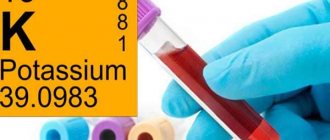Swelling of the legs, unfortunately, is well known to many. The legs swell and increase in volume. This happens because excess intercellular fluid accumulates in the tissues. Normally, the volume of fluid in the body is constant: as much as it enters the body, so much should be excreted. If fluid is retained in the body (and this excess volume can be measured in liters), edema occurs. The formation of edema can also be caused by fluid redistribution (disruption of the normal distribution of fluid throughout the body).
The tissues of various organs and parts of the body can swell, but most often it is the legs that suffer (primarily the ankles and shins). This is explained, firstly, by the fact that the legs bear the maximum load (they have to bear all of our weight - if we stand or walk; hence, long standing work or prolonged walking are factors contributing to swelling of the legs); secondly, the legs are the lowest part of our body; gravity helps the fluid descend here and prevents its outflow.
Swelling of the legs Swelling of the legs is not always obvious. Its first manifestation may be the appearance of a sock elastic mark on the ankle. At the next stage, the usual shoes become tight. Women notice that the straps of their sandals begin to “sink,” as it were, sinking into loose and soft fabric. Under certain circumstances, the legs can swell even in a healthy person. As a rule, swelling is observed in the evening, as a result of the stress placed on the legs during the day. However, if swelling occurs regularly or persists constantly, you should consult a doctor. Edema is a symptom of a wide range of diseases, many of which are very serious and require immediate treatment.
Physiological edema
Swelling of the legs can be caused by physiological reasons, that is, be a consequence of special circumstances affecting a healthy body, and not a manifestation of a disease. These reasons include:
- salty food. Salt binds water. And if you eat a lot of salty foods, especially at night, you may notice swelling in the morning;
- alcohol. Alcohol also retains water. Therefore, after drinking alcohol, a person looks puffy. The problems are not limited to the face; the legs can also swell;
- hot weather. In the heat, blood vessels dilate as the body tries to normalize heat exchange. More blood flow means the risk of congestion and swelling in the legs increases;
- prolonged sitting or standing. If the legs are in one position for a long time, the blood stagnates in them, which leads to swelling. The worst thing is to sit with your legs crossed. Standing in one place for a long time is also not useful. Swelling of the legs is typical for people in standing professions - hairdressers, salesmen, cooks;
- uncomfortable shoes. If shoes disrupt normal blood circulation in the foot (high heels, narrow arches, tight straps), wearing them will lead to swelling.
What does bilateral edema indicate?
Bilateral edema can indicate both serious disruptions in the functioning of a number of organs and systems, and improper distribution of load during the day. Let's consider the second option first.
Incorrect distribution of the load is a long stay in one position, for example, static work on the legs throughout the day. But it can also be too much physical activity that is unusual for you, sitting still for a long time (for example, after an air flight) and even uncomfortable shoes. All these reasons can lead to the formation of edema in both legs. As a rule, this swelling goes away after some time.
But there are edema caused by disruption of various organs, in particular the heart and kidneys. Cardiac edema occurs due to the fact that the heart cannot cope with pumping blood, and its stagnation occurs. These swellings are soft to the touch, the skin in the area of the swelling is pale, may acquire a bluish tint, and is cool. If you press on the swollen area, a dent remains in the area of pressure. Cardiac edema is not constant; during night sleep it decreases or subsides. Swelling of both ankles can be associated with impaired kidney function, but more often renal edema appears on the face. But if, simultaneously with swelling, you notice problems with urination, then contact a nephrologist. It is possible that you are dealing with a malfunction of the excretory system.
It is important to pay attention to one more significant point. Swelling of the ankles in men is most often associated with increased stress on the legs. Swelling of the ankles in women can be caused by hormonal changes, for example, during pregnancy or before the onset of menstruation. Also, a similar reaction can be caused by taking hormonal drugs.
“Female” causes of leg swelling
Swelling of the legs
In women, swelling of the legs can be caused by special reasons:
- premenstrual syndrome. Before menstruation, the hormonal balance is disrupted - the relative content of estrogens increases, and estrogens retain fluid in the body;
- pregnancy. During pregnancy, a woman's body produces a large amount of progesterone, which reduces vascular tone. This contributes to stagnation of blood in the legs. The growing fetus can compress large vessels, which also causes edema - this reason becomes significant in the later stages. Swelling can also be a manifestation of gestosis (late toxicosis of pregnancy).
Diuretic tablets are divided into four types:
- Potassium-sparing. Keeps potassium at a stable level, since potassium is usually released when using diuretics.
- Loopbacks. Suppress the reverse absorption of potassium, chlorine and sodium.
- Thiazide. They have the property of being quickly absorbed by the walls of the gastrointestinal tract.
- Thiazide-like diuretics. With a diuretic effect, less potassium is excreted from the body.
Diuretics also help with hypertension. Excess fluid is removed from the body and blood pressure decreases. Accordingly, swelling of the legs also decreases or disappears. The most common medications are:
- Hydrochlorothiazide
- Chlorothiazide
- Indapamide
- Furosemide
Swelling of the legs as a symptom of pathological conditions and diseases
Swelling caused by a physiological cause is usually symmetrical, that is, it is observed on both legs at once. Such swelling is usually mild; If you press with your finger, a mark remains at the point of pressure, which disappears right before your eyes. When physiological conditions are restored to normal, edema quickly disappears. The absence of these signs, especially if the swelling does not go away within 24 hours, is a reason to consult a doctor: in this case, the swelling is most likely caused by a pathological cause.
The list of diseases, the manifestation of which can be swelling of the legs, is extensive. Here are the main ones:
- heart failure. If the heart's activity is impaired, it cannot maintain blood circulation at a sufficient level. Congestion occurs, and first - in the area furthest from the heart, and these are precisely the legs (feet, ankles and legs). The swelling that occurs for this reason is symmetrical; swelling intensifies in the evening (under the influence of gravity, blood accumulates in the lower part of the circulatory system);
- vascular diseases. With varicose veins, swelling increases gradually as the disease develops. My legs get tired, and in the evening they begin to ache and swell. By morning the swelling goes away. If one leg is swollen (and hurts), then it may be phlebitis (inflammation of a vein) or thrombosis (a thrombus blocks the lumen of the vessel, as a result of which the blood flow is disrupted, plasma enters the surrounding tissues, causing swelling);
- renal pathology. With renal origin, the peak of swelling occurs in the morning. At the same time, not only the legs swell (swelling on the face is characteristic - “bags under the eyes”), but mainly the feet swell on the legs;
- liver diseases (cirrhosis, liver cancer);
- lymphostasis (impaired lymph outflow);
- erysipelas is an infectious disease caused by group A streptococcus. Lymphostasis is often a consequence (complication) of erysipelas;
- joint diseases - rheumatoid arthritis, injuries, etc. In this case, the affected joint swells;
- thyroid dysfunction. With hypothyroidism, swelling (myxedema) can be observed throughout the body, including the legs. With hyperthyroidism, the surface of the lower leg thickens (in front, just above the ankle). At the site of swelling, the skin becomes keratinized and flaky, hair falls out (hair follicles are lost). When you press on the swelling, there is no trace left, it is elastic, it cannot be crushed into a fold;
- allergic reactions. With allergic arthritis, the joints become swollen. Possible swelling from insect bites.
Individual treatment of edema is ineffective. Edema can be removed if the cause that caused it is random (physiological edema, minor injuries, insect bite). In other cases, treatment of the disease is required, the symptom of which is swelling of the legs.
"Elephant Disease"
A type of leg swelling that is frightening in appearance is “elephant disease.” The affected limb swells, its shape and proportions change, gradually acquiring the appearance of an elephant limb (hence the name), and the patient’s weight rapidly increases. The cause of the disease is disturbances in lymph flow in the skin tissue and subcutaneous layer. “Elephantiasis” is one of the symptoms of such a serious disease that requires complex treatment as lymphostasis. The trigger for the development of “sleep disease” can be numerous factors, including streptococcal infection, helminthic infestation, and previous sexually transmitted diseases.
Which doctor should I contact for swelling of the legs?
If you have swelling of the legs, you should first consult a general practitioner (general practitioner or family doctor). In order to determine the cause of the swelling, a simple examination may not be enough. You must be prepared that you will need to undergo a series of tests or undergo instrumental examination (ultrasound, MRI). In some cases, after receiving the results of the examination, the therapist may refer you to specialized specialists (cardiologist, urologist, etc.).
What tests should I take for swelling of the legs?
- A general analysis and blood biochemistry will show the level of red blood cells, hemoglobin and platelets. Cholesterol levels will also be determined to exclude possible atherosclerotic vascular damage, ischemia and gout.
- Blood sugar test. A negative result will rule out diabetes;
- A urine test will detect elevated levels of protein and red blood cells;
- Determining the level of hormones will show whether there are hormonal disorders in metabolic processes;
- Electrocardiography and ultrasound examination of the heart - to identify possible deviations from the norm of the cardiovascular system;
The following diagnostic studies may result from the above tests:
- Ultrasound of the veins and arteries of the lower extremities, as well as ultrasound of the abdominal cavity and pelvis - to determine diseases of the internal organs;
- Computed tomography and magnetic resonance imaging will allow you to more accurately detect the problem area.
Prevention
In addition to treatment, in the action plan for eliminating swelling, the doctor may also include adherence to some lifestyle recommendations that will help avoid consequences:
- Do not sit in one position for a long time.
- Change shoes throughout the day.
- Periodically massage the ankle joint.
- Add foods high in potassium to your diet.
- Before going to bed, raise your legs and hold them in this position for several minutes. Will relieve fatigue and tension.
At the first signs of chronic swelling, you should not resort to folk remedies. A prompt visit to the doctor will allow you to pay attention to the existing problem in time and determine the next course of action aimed at identifying and treating the disease. By turning to Nikor Medical Center for help, you can get the necessary advice, avoid further consequences and prevent complications.
Treatment methods
Having received the results of all the necessary tests, a specialized specialist from a medical institution prescribes medications and treatment procedures in accordance with the diagnosis. As a rule, special products are used - gels and ointments that reduce skin sensitivity and discomfort in areas of swelling. In the case of late stages of the disease, the problem is solved through surgery. To relieve symptoms, in some cases it makes sense to wear special compression garments. In the early stages of varicose veins, physiotherapy, dieting and therapeutic exercises are recommended, which should only be done under the supervision of a specialist.









